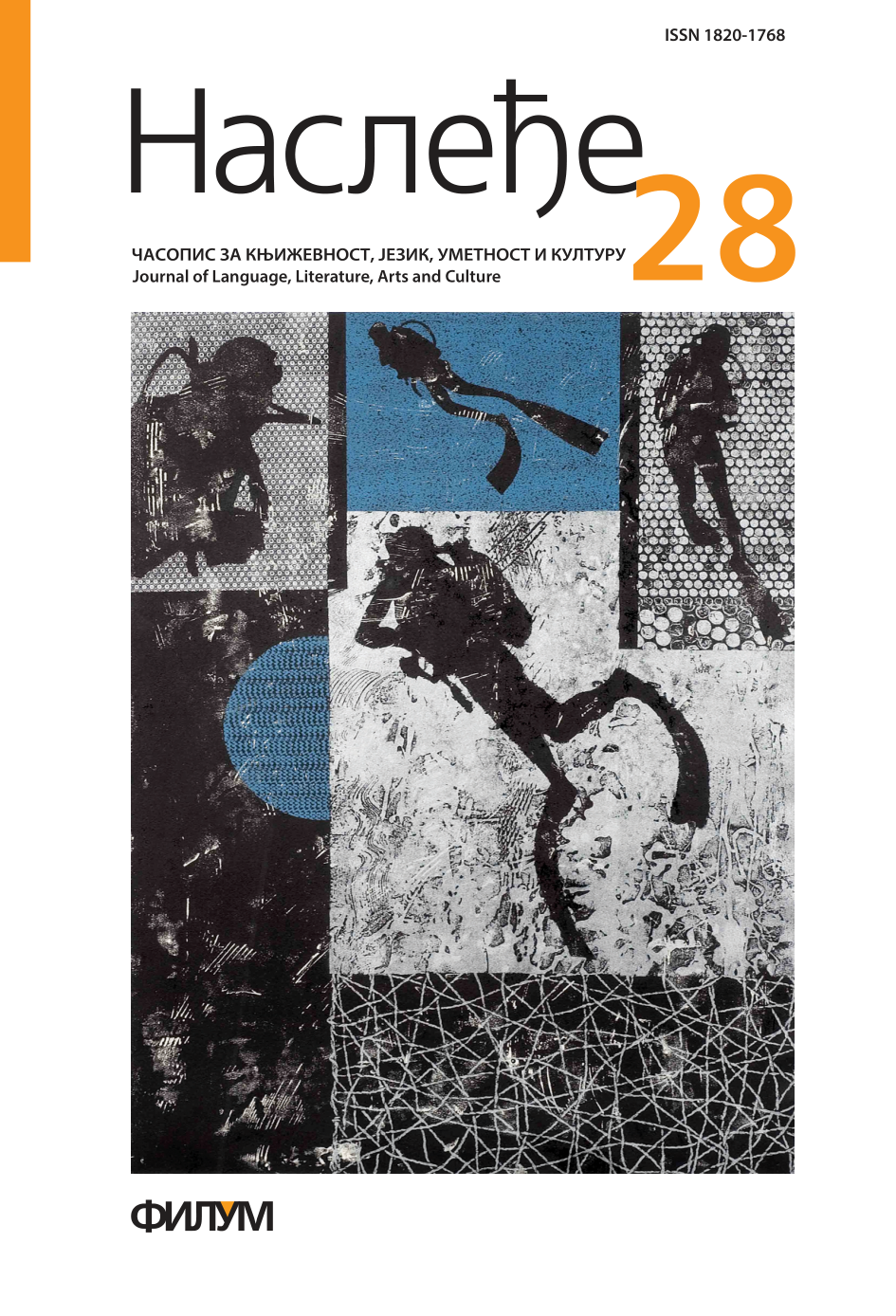CARNIVAL PLAY AND SOCIAL SUBVERSION IN THELIFE AND ADVENTURES OF BUSCON BY FRANCISCO DE QUEVEDO
Keywords:
Francisco de Quevedo, The Life and Adventures of Buscón, Spanish picaresque novel, carnival vision, social subversion, Bakhtin’s criticismAbstract
Starting from the criticism which Mikhail Bakhtin dedicates to François Rabelais’s work Gargantua and Pantagruel (1532-1564), this article has analyzed the carnival image of the Spanish picaresque novel The Life and Adventures of Buscón (1626) by Francisco de Quevedo, and especially the “carnival series”, closely studied by Bakhtin. The focus of the paper is on the chapters selected as the most important to the topic we are interested in. In Buscón, the constituent elements of the carnival: laughter, humor, life, death, eschatology manifest in an original way and almost beyond the frames of the picaresque. Carnival and the carnivalesque are not related to the spiritual but to the material, as a basic element in the picaresque novel. In this novel Carnival has become a laudatory song of materiality where the body and all the material are essential. Carnival also covers the field of play-roles and the radical change of identity. Buscón is a parody novel, where the writer is the highest authority of the narrative process and the grotesque world whose ideology and social elitist concept gives the novel a range of originality, cruelty and lack of compassion. Thus, the novel becomes an inquisitorial process under the control of the Spanish novelist. In fact, during the carnival and the punishment of the inquisitorial procession each participant can be both an aggressor and a victim, depending on the situation and the judge. Consequently, Buscón is a novel that plays with Carnival and manifestations of popular Spanish tradition and changes the essence and nature of the carnival spirit, foregrounding the ideology of the author on the evil manifestations of the current society. Also, the novelist describes a failed attempt of social subversion by the rogue and obviously uses carnival references distorting and adapting them to his goal to expose the rogue and social mystification. The carnivalesque world of fiction serves to create a utopia, an inverted world, an alternate reality marked by the triumph of the dominant social vision of the author, an ambiguous world where the ambiguity is resolved in prevalence of ‘social demystification’ on ‘carnivalesque mystification’, as it seeks to become a true social mystification, under the transformation of a rogue to an impeccable nobleman.
References
Artal Maillie 2012: S. G. Artal Maillie, Francisco de Quevedo y François Rabelais: imágenes deshumanizantes y representación literaria del cuerpo, Pamplona: Ediciones Universidad de Navarra.
Bahtin 1987: M. Bahtin, Stvaralaštvo Fransoa Rablea i narodna kultura srednjeg veka i renesanse, preveli Ivan Šop i Tihomir Vučković, Beograd: Nolit.
–1989: –, O romanu, prevod Aleksandar Badnjarević, Beograd: Nolit.
Basanta 2003: Á. Basanta, Introducción, in: Francisco de Quevedo, El Buscón, edición de Ángel Basanta, Madrid: Castalia, Castalia didáctica, 19-51.
Blanco 2003: M. Blanco, La agudeza en El Buscón, in: Alfonso Rey (editor), Estudios sobre el Buscón, Pamplona: Ediciones Universidad de Navarra, 133-171.
Cros 2006: E. Cros, El Buscón como sociodrama, prólogo de Antonio Chicharro, Granada: Editorial Universidad de Granada, Biblioteca de Bolsillo.
Francis 1980: A. Francis, Introducción, in: Francisco de Quevedo, La vida del buscón llamado Don Pablos, edición, introducción y notas de Alan Francis, Salamanca: Ediciones Almar, 9-29.
Jáuregui Lobera 2007: I. Jáuregui Lobera, Conducta alimentaria y sus alteraciones en la picaresca española. Madrid: Editorial Díaz de Santos
Jones 2000: R. O. Jones, Historia de la literatura española, Vol. 2 (Siglo de oro: prosa y poesía), Barcelona: Ariel.
Karanović 2012: V. Karanović, La realidad carnavalesca y su negacićon: comida, bebida y hambre en la novela picaresca Lazarillo de Tormes, in: Anđelka Pejović, Mirjana Sekulić y Vladimir Karanović (eds.), Comida y bebida en la lengua española, cultura y literaturas hispánicas, Kragujevac: Facultad de Filología y Artes, 273-286.
Navarro Durán 2012: R. Navarro Durán, Pícaros, ninfas y rufianes (La vida airada en la Edad de oro), Madrid: Edaf, Colección Crónicas de la historia.
Platas Tasende 2011: A. M. Platas Tasende, Carnavalesco, in: Diccionario de términos literarios, Madrid: Espasa. 103.
Quevedo 2011: F. de Quevedo, La vida del Buscón, edición, estudio y notas de Fernando Cabo Aseguinolaza, Madrid: Real Academia Española, Biblioteca clásica.
Rey Hazas 2003: A. Rey Hazas, Deslindes de la novela picaresca, Málaga: Servicio de Publicaciones de la Universidad de Málaga.
Rodríguez Cacho 2009: L. Rodríguez Cacho, Manual de Historia de la literatura española (Vol. 1 - Siglos XIII al XVII). Madrid: Castalia, Castalia Universidad.
Roncero López 2010: V. Roncero López, La risa como humillación social: El Buscón, in: De bufones y pícaros: la risa en la novela picaresca. Madrid: Iberoamericana/Frankfurt: Vervuert, 185-242.






